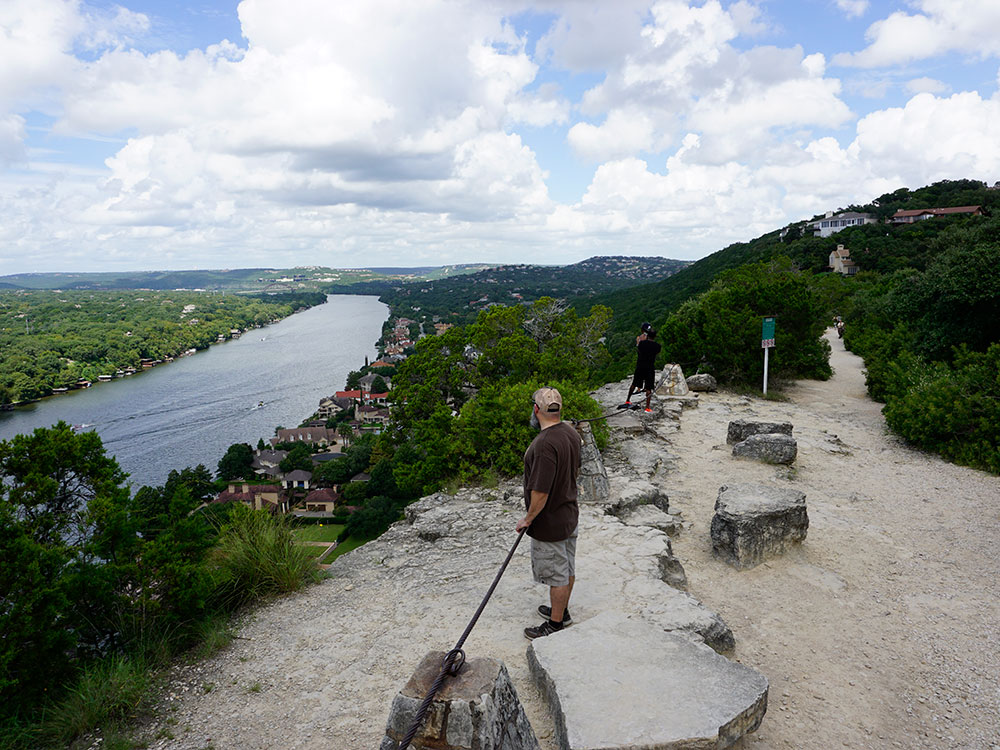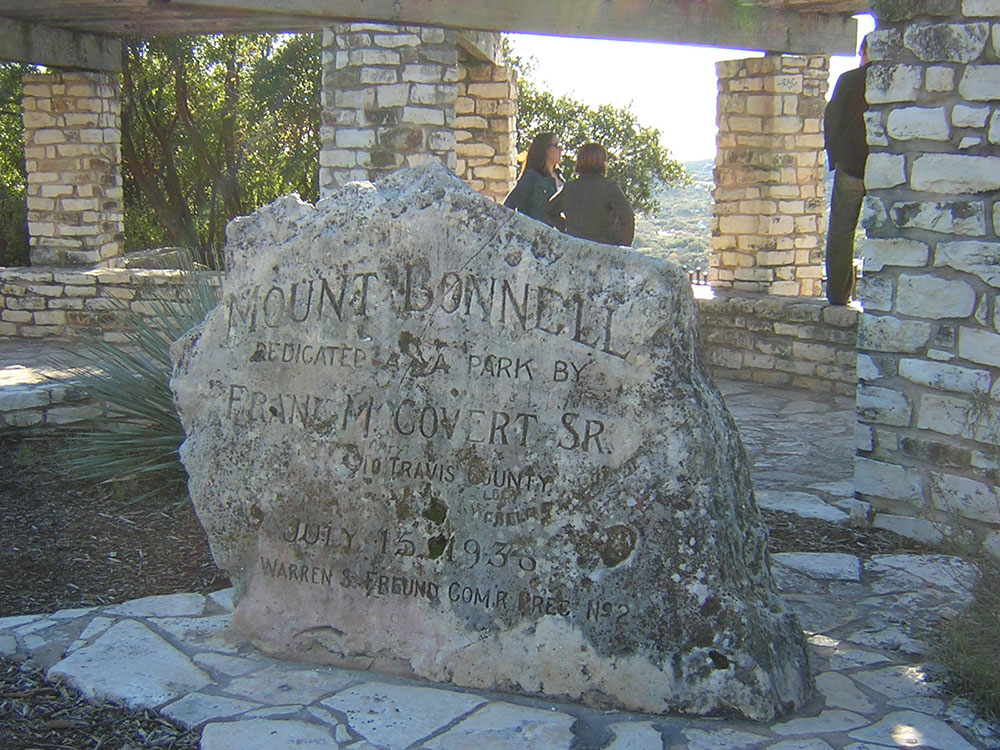Prominent point alongside the Lake Austin portion of the Colorado River in Austin providing a vista for viewing the city of Austin, Lake Austin, and the surrounding hills
General Information
Get on TX-1 Loop N. Follow TX-1 Loop N to W 35th St. Take the 35th St exit from TX-1 Loop N. Follow W 35th St to Mt Bonnell Rd.
Mount Bonnell, also known as Covert Park, is a prominent point alongside the Lake Austin portion of the Colorado River in Austin, Texas. It has been a popular tourist destination since the 1850s. The mount provides a vista for viewing the city of Austin, Lake Austin, and the surrounding hills. It was designated a Recorded Texas Historic Landmark in 1969, bearing Marker number 6473, and was listed on the National Register of Historic Places in 2015.
Mount Bonnell is often described as the highest point in Austin, with the elevation at its peak about 775 feet above mean sea level. If Mount Bonnell ever held this distinction, it was only because the city limits did not include the next summit to the north, Mount Barker, which has an elevation of about 840 feet above mean sea level. Many other areas now in the city of Austin are also higher than Mount Bonnell, but few publicly accessible spots offer such a sweeping view of the downtown area.
Mount Bonnell is generally believed to have been named after early Texas newspaper publisher George W. Bonnell, who moved to Texas in 1836. George W. Bonnell was publisher of the local paper The Texas Sentinel and was prominent in early Texas and Travis County (Austin) affairs after the War for Independence. Though sources have long credited George Bonnell as the mountain's namesake, Albert Sidney Johnston may have named Mount Bonnell in present-day Austin for his friend and fellow West Point graduate Joseph Bonnell, who was a Captain in the Texas Army during the War for Independence. There is little contemporaneous evidence to support either derivation of the name.
Legend has it that Mount Bonnell was once called Antoinette's Leap, after a young woman who leaped to her death to avoid being captured by Native Americans who had killed her fiancé.
This article uses material from the Wikipedia article "Mount Bonnell", which is released under the Creative Commons Attribution-Share-Alike License 3.0


